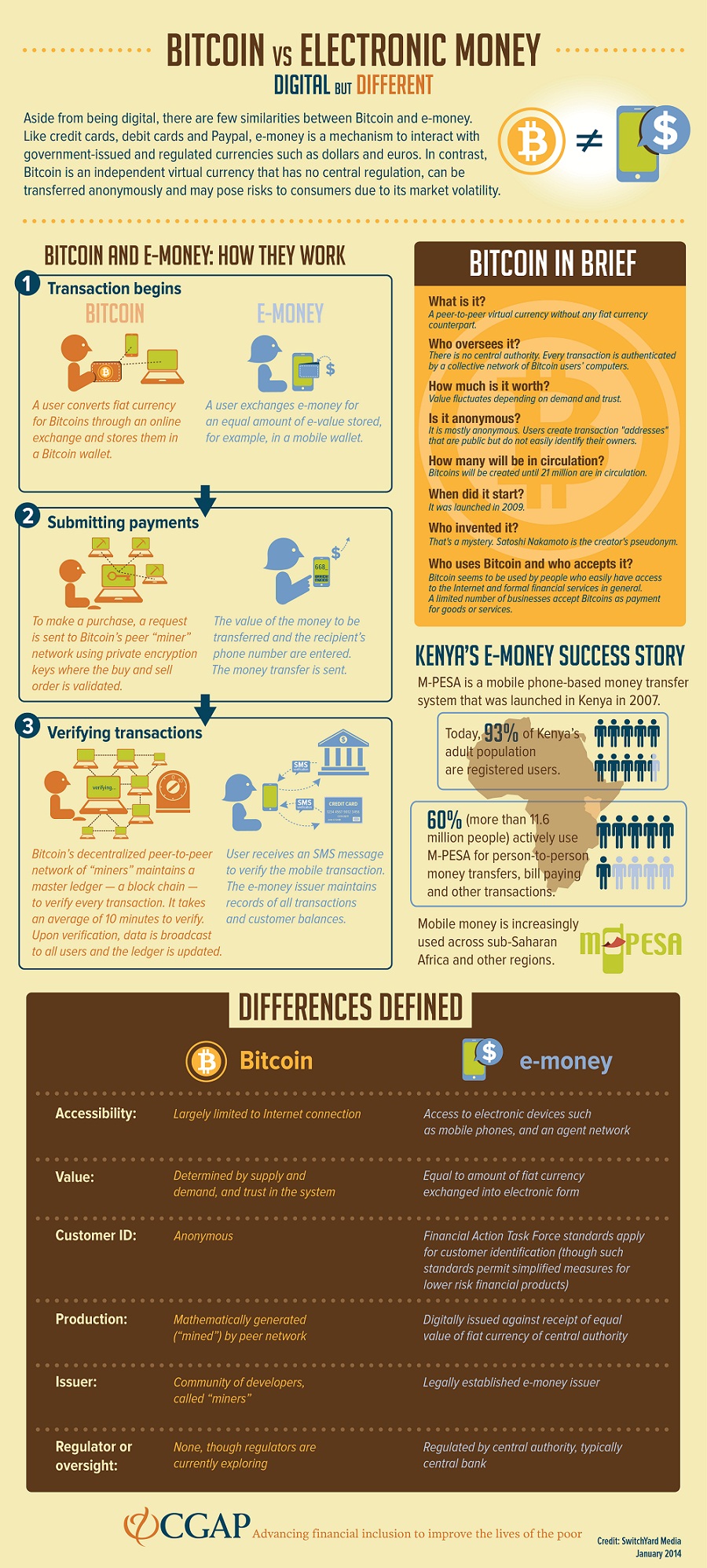
Explained: The Differences Between Electronic Money and Bitcoin
Explained: The Differences Between Electronic Money and Bitcoin
Electronic Money (commonly abbreviated e-money) and Bitcoin are two systems for making payments that are digital in nature. Both are catalysts in the mobile payments revolution, but that is where their similarities end.
In reality, the two systems are extremely different. Today’s infographic sums up the major points to consider when thinking about these ideas.
E-money is an electronic component of fiat currency systems, and still trades in familiar units such as dollars, euros, pesos, or yen. E-money is typically regulated and controlled within the framework of a government’s central banking system. The customers of such transactions are identified under Financial Action Task Force standards and as a result are not anonymous.
Bitcoin is a decentralized electronic currency that derives its value from supply and demand as well as trust in the system. The network uses complex math to verify transactions, and the people that volunteer their computing power to the network, or “miners”, are generated bitcoins as a reward for their efforts. Customers are anonymous in that they are not directly identified under FATF standards. However, to obtain full anonymity, customers have to take additional precautions. Bitcoin is not regulated in most places, although some countries have adopted some early regulations or rules.
While both Bitcoin and E-money harness the power of the web and mobile, they are still very different.
Want more information on the background of Bitcoin?
Don’t forget to see our infographic documenting the Definitive History of Bitcoin.
Original graphic by: CGAP